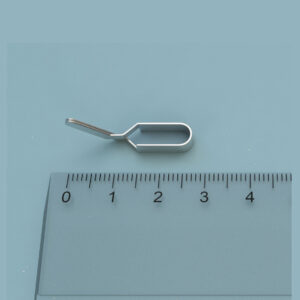$1,390.00
The Bee Radial Arm Maze (RAM) was initially developed to investigate the effects of sublethal doses of insecticide on bee behavior. Spatial working memory is crucial in pollen and flower foraging strategies, making this RAM a unique adaptation of its rodent counterpart for studying Bombus terrestris (bumblebees). The apparatus features a circular arrangement of eight artificial flowers mounted on a vertical board, with acrylic baffles measuring 10×15 cm separating each flower.

MazeEngineers empowers preclinical neuroscience research with meticulously designed, customizable behavioral apparatuses. From manual classic mazes to fully automated smart systems, we provide the tools scientists need to capture high-quality, reproducible data for studies on learning, memory, anxiety, and depression.



Features |
Length: 10cm |
Width: 15cm |
Height: 0.3cm |

The Bee Radial Arm Maze serves as a behavioral paradigm for assessing the impact of acute pesticide exposure on the spatial working memory of bumblebees (Bombus terrestris). Spatial working memory is critical for the effective pollination of flowering plants, which heavily relies on insect pollinators. Understanding stressors affecting bee populations, behavior, and health is crucial.
This maze investigates how pesticides, such as neonicotinoids (e.g., thiamethoxam), used on flowering crops can inadvertently impair the cognitive abilities of visiting insect pollinators. The setup mimics natural foraging conditions and consists of a circular array with eight reward arms visible from the center. Bumblebees are tasked with visiting each of the eight flowers sequentially and then returning to their nest, relying on spatial learning and memory. Spatial memory performance is evaluated before and after pesticide exposure, aiming to prevent revisits to already accessed reward locations.
The Bee RAM was developed by Elizabeth, Zachary, Richard, and Ellouise in 2016 as an adaptation of the Radial Arm Maze (RAM).
The experimental setup comprises a circular board with an array of eight artificial flowers. Each flower consists of three square plastic chips adhered together, and these flowers can be interchanged manually via slots in the board. Wooden baffles measuring 10cm x 15cm x 0.3cm are positioned between each flower to prevent bees from moving directly from one flower to another.
Atop each of the eight blue chips, which serve as landing platforms for bumblebees, there is a 4mm hole. This hole allows the bees to extend their proboscis through and obtain a reward.
House bees in wooden nest boxes connected to the Bee RAM via a tube for controlled entry and exit from the apparatus. Ensure continuous ventilation in the box throughout the day and maintain room temperature between 20-25 degrees Celsius. Outside of training or testing sessions, allow unrestricted access for bees to the arena. Maintain a steady supply of food and water at all times, and replenish pollen pellets in the nest box every 2-3 days.
Before testing, train bees in groups by introducing them to the Bee RAM. Load the artificial flowers with sucrose solution and allow unrestricted access for one hour. Identify motivated foragers that demonstrate spontaneous learning to feed on the flowers and apply tags for identification. Subsequently, return all bees to their nesting box.
Replace the previously visited flowers with fresh, scent-free ones and reload them with sucrose solution. Select a tagged bee and permit it single entry into the arena. Each insertion of the bee’s proboscis through a hole counts as a visit to a flower. Record the total number of visits to the flowers made by each bee. Each bee undergoes 10 training sessions.
Determine thiamethoxam doses for field-realistic and non-field realistic exposures, ensuring three doses are randomly administered to the bees: two sub-lethal doses and one high sub-lethal dose as a positive control. Allow the bees to return to their nest to maximize drug absorption without delaying motivation. After approximately 45 minutes, reintroduce the bees to the arena for the final testing session and record their foraging behavior.
In their study, Elizabeth et al. (2016) housed seven colonies of Bombus terrestris in wooden nest boxes connected to a foraging area. The bees were provided with a 43% w/w sucrose solution during their visits to the arena. Each day before testing, the bees underwent an hour-long training session where they exhibited a combination of stereotyped movement patterns and spatial working memory to complete the tasks.
From the bees trained on the RAM, the researchers selected 61 individuals and assigned them to groups receiving different pesticide doses: control (n = 16; 0 ng), Low 1 (n = 14; 0.091 ng), Low 2 (n = 16; 0.377 ng), and high (n = 15; 2.5 ng). Each group underwent retesting across four measures: total revisits, correct choices in the first eight visits, correct choices before the first revisit, and time per visit.
The high dose of pesticide significantly affected the first two RAM performance measures assessed. Compared to the control and low-dose groups, bees in the treated group made fewer correct choices before revisiting flowers, indicating difficulty in remembering previously visited locations.
Pesticide treatment notably impacted larger bees in terms of total revisits and correct choices in the first eight visits, although there was no significant effect on the last two measures. Furthermore, the high dose of thiamethoxam had a pronounced effect on working spatial memory, while the low dose produced smaller, size-dependent effects on the bees.
Overall, the study concluded that untreated bees exhibited better performance and working spatial memory compared to those exposed to pesticide, highlighting a negative impact of thiamethoxam on bumblebee spatial memory.
RAM performance is assessed by the following four measures:
The Bee RAM stands out as a pivotal tool for studying working memory deficits in bumblebees. It aims to assess how sub-lethal doses of pesticides impact bee behavior under field-realistic conditions, providing valuable insights for policy decisions.
This maze facilitates the analysis of bees across various size categories, allowing researchers to investigate which colony cohorts are susceptible to memory impairments caused by pesticides.
Designed to simulate a natural foraging environment, the Bee RAM ensures that bees feel comfortable and at ease in the arena. Unlike other techniques such as the Morris water maze, which employ stress-inducing aversive stimuli like water or heat to prompt escape responses, Bee RAM uses food as a motivator to evaluate performance. This approach, as demonstrated by Harrison, Hosseini, and McDonald (2009), minimizes undue stress and pressure on the bees, thereby enhancing their performance reliability.
The maze’s simple yet effective design guides bees through their exploration while wooden baffles strategically limit their route choices. After each visit, bees return to the center to make subsequent navigational decisions, with trap doors regulating their movement in and out of the maze.
Bee RAM comprehensively assesses nearly all aspects of spatial working memory, producing robust and reproducible results.
Despite its straightforward design and protocol, the Bee RAM presents certain drawbacks. As a behavioral paradigm, the bees’ activity heavily relies on precise pesticide dosing. Errors in handling or dosage calculation can not only affect performance but also cast doubt on the validity of scores, potentially causing undue stress through excessive handling of the bees.
Another challenge inherent in spatial memory tasks is the tendency for animals to rely on stereotypical movement rules to locate targets. This behavior may involve strategies other than true spatial learning and memory. For instance, bees are known to utilize heuristic movement rules (Natasha & Daniel, 2018) to guide their foraging decisions. Enhancing the task design requires deeper insights into animal behavior and more effective techniques to comprehensively capture these behaviors.
Lastly, the task necessitates the frequent replacement of flowers after each visit to eliminate olfactory cues, a process that is labor-intensive and time-consuming.
| Color | Black, Blue, Clear, Grey, White |
|---|
There are no questions yet. Be the first to ask a question about this product.